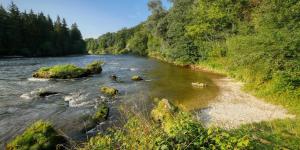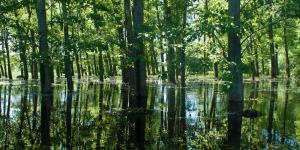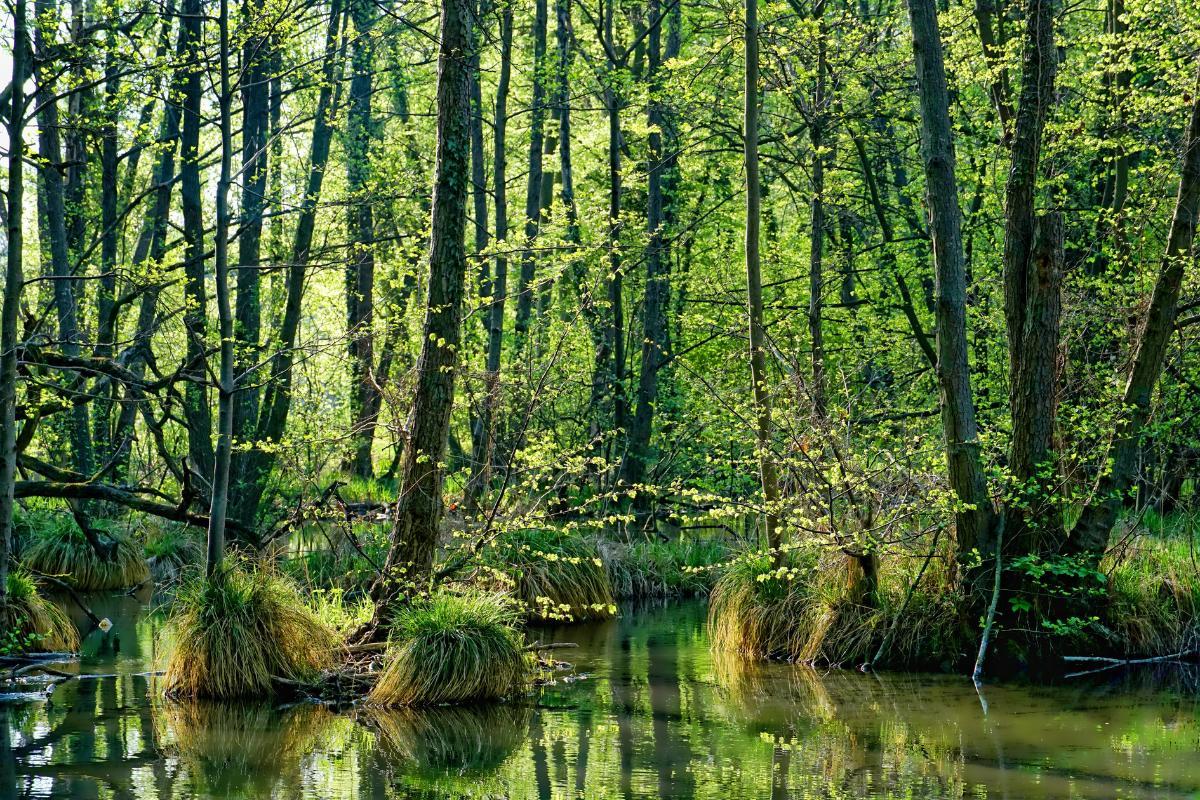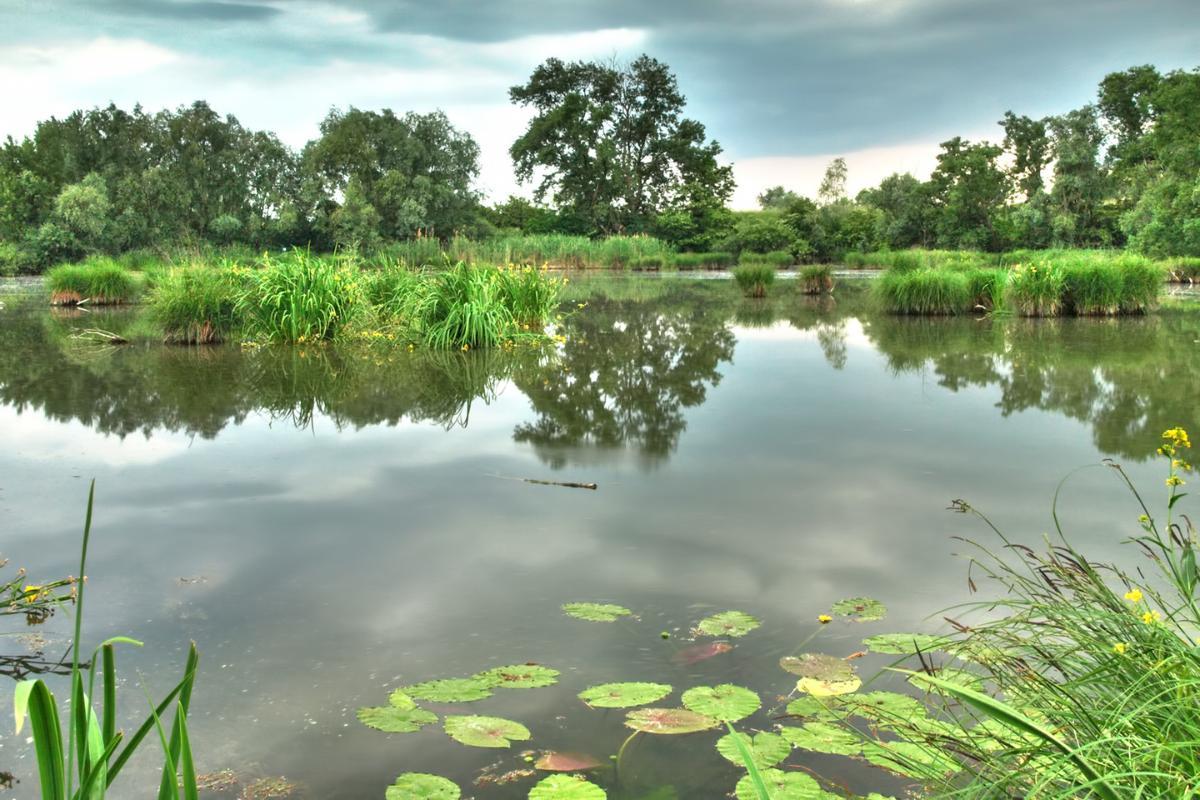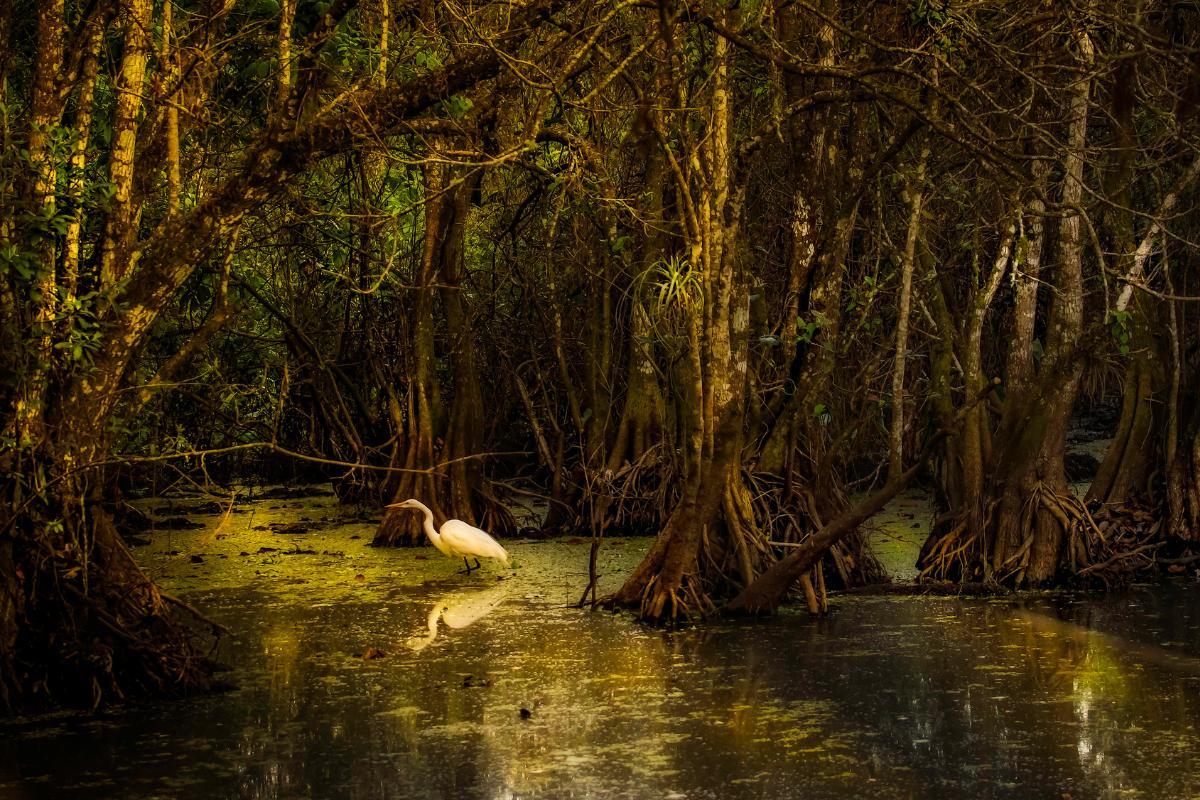What Are Swamps? - Definition and Types


Swamps often get a bad rap – murky, mysterious, and maybe even a little monstrous. But look beyond the surface, and you'll discover a fascinating and vital ecosystem teeming with life. These unique wetlands are characterized by their waterlogged soils and the presence of standing water, creating a dynamic environment that supports an astonishing biodiversity.
In this article by thedailyECO we'll explore the definition of swamps, their formation, unique characteristics, and the crucial role they play in our environment.
What is a swamp
A swamp is a type of wetland characterized by its unique blend of aquatic and terrestrial ecosystems, making it one of the most diverse habitats on Earth.
Swamps are usually located near rivers, streams, or other flowing water sources. They receive both precipitation and surface water runoff, creating a dynamic environment with fluctuating water levels.
Swamps play a vital role in the ecosystem by providing essential services such as water purification, flood control, and habitat for numerous plant and animal species. The dense vegetation of swamps acts as a natural filter, trapping pollutants and sediments and improving water quality.
Additionally, swamps serve as crucial breeding grounds and nurseries for many aquatic species. They support a diverse food web, with plants serving as the base for numerous food chains that sustain a variety of wildlife.
Throughout history, humans have interacted with swamps in various ways. Many cultures have utilized swamps as a source of food, medicine, and building materials. However, human activities such as drainage, deforestation, and pollution have posed significant threats to swamp ecosystems, leading to habitat loss and biodiversity decline.
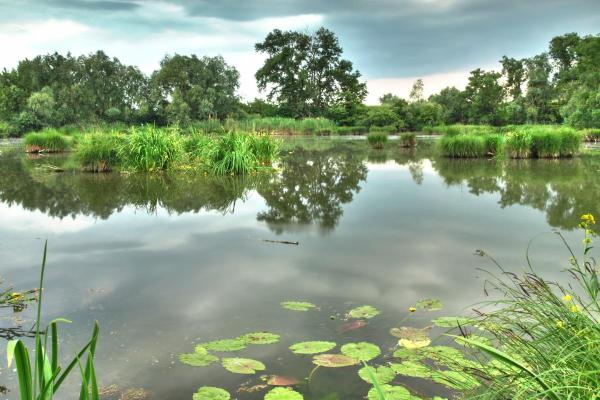
Characteristics of a swamp
Swamps exhibit a series of distinctive features that set them apart within the spectrum of wetlands:
- Abundant biodiversity: the diverse microhabitats found in swamps, ranging from flooded areas to drier patches, provide habitats for a wide variety of plant and animal species. This diversity supports numerous ecological niches, fostering a complex and interconnected ecosystem.
- Nutrient-rich soil: swamps generally have soil that is nutrient-rich due to the accumulation of organic matter. The decomposition of plant material in swamps contributes to soil fertility, supporting lush vegetation and a thriving ecosystem.
- Vegetation adapted to wet conditions: the flora of swamps is specially adapted to thrive in wet environments. These plants have evolved various adaptations, such as specialized root systems and tolerance to fluctuating water levels, to survive in aquatic or semi-aquatic conditions.
- Stagnant or slow-flowing water: swamps typically feature stagnant or slow-flowing water, creating favorable conditions for the growth of aquatic vegetation. This stagnant water also provides habitat for a diverse community of aquatic organisms, including insects, fish, amphibians, and aquatic birds.
- Seasonal variation: swamps may experience seasonal fluctuations in water levels due to rainfall and evaporation. These seasonal changes can create dynamic habitats, with areas of open water, mudflats, and emergent vegetation, further enhancing the biodiversity of the swamp ecosystem.
- Filtration and flood control: swamps play a vital role in purifying water by filtering out pollutants and trapping sediments, thereby improving water quality downstream. Additionally, the dense vegetation of swamps helps to absorb excess water during periods of heavy rainfall, reducing the risk of flooding in surrounding areas.
Did you know that lakes and swamps make up just a small fraction of the Earth's water? Learn more about the distribution of water on Earth in our other article.
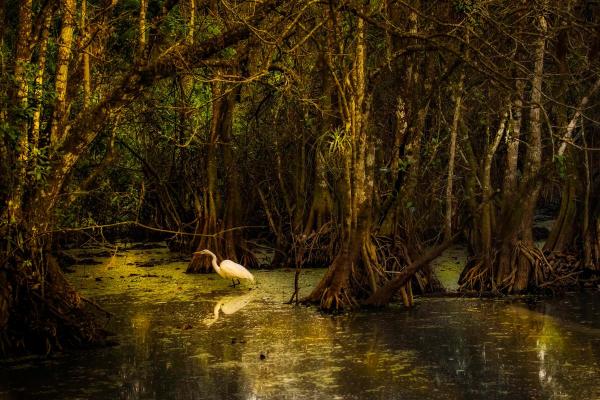
Types of swamps
Here's a list focusing specifically on the different types of swamps:
- Freshwater swamps: found worldwide, characterized by low salinity and home to diverse aquatic life, including fish, water birds, and aquatic plants.
- Brackish swamps: located in areas where freshwater mixes with saltwater, such as estuaries and coastal zones, supporting species adapted to both freshwater and saltwater conditions.
- Stagnant water swamps: areas with minimal or no water flow, common in humid climates with poorly drained soils, supporting a diverse community of aquatic and terrestrial life.
- Flowing water swamps: swamps with a constant or intermittent flow of water, forming in areas with slowed water currents due to terrain topography or obstacles like rocks or fallen logs.
- Mountain swamps: found in mountainous regions, characterized by cold, clear water originating from mountain streams and supporting specialized flora and fauna adapted to high-altitude environments.
- Tropical swamps: located in tropical regions, covered by dense, lush vegetation and supporting a rich biodiversity of plant and animal species due to the warm climate and abundant rainfall.
- Saltwater or coastal swamps: occur in coastal areas influenced by tides, dominated by salt-tolerant plants like mangroves and providing essential habitats for coastal wildlife.
- Mangrove swamps: tropical coastal ecosystems dominated by mangrove trees, adapted to saline and brackish water conditions, and offering valuable ecosystem services such as carbon sequestration and shoreline protection.
Delve deeper into the hidden wonders of wetlands, from swamps to marshes, in our article on the importance and diversity of these watery havens.
Flora and fauna of a swamp
The flora and fauna of a swamp is a unique and diverse ecosystem teeming with life adapted to the wet, boggy conditions. Let's delve deeper and explore some of the most significant creatures that inhabit the swamp:
Flora of a swamp
- Reeds: these perennial herbaceous plants are common along the banks of swamps, forming dense stands that provide shelter and food for local wildlife.
- Cattails: also known as "bulrushes," these plants have distinctive spike-shaped inflorescences. Cattails are important for providing habitat and food for waterfowl and other wetland organisms.
- Water lilies: these perennial aquatic plants have floating leaves and showy flowers that emerge above the water's surface, adding beauty to swamp ecosystems and providing habitat for aquatic insects and small fish.
Fauna of a swamp
- Amphibians: swamps are home to various amphibians, including frogs, toads, and salamanders. These creatures rely on water for breeding and find refuge among aquatic vegetation and the edges of swamps.
- Water birds: swamps attract a variety of water birds, such as herons, ducks, geese, and wading birds. These birds feed on fish, insects, and aquatic plants found in the swamp and use the dense vegetation as shelter and nesting sites.
- Fish: common fish species found in swamps include bluegill, catfish, and largemouth bass. These fish play an essential role in the swamp ecosystem, contributing to the food web by feeding on aquatic insects and serving as prey for larger predators.
- Aquatic insects: swamps are rich habitats for a diverse range of aquatic insects, including mosquitoes, dragonflies, aquatic beetles, and fly larvae. These insects are a vital food source for fish, amphibians, and waterfowl, contributing to the overall biodiversity and ecological balance of the swamp.
Did you know that there are pink lakes all over the world? Learn more about these unique bodies of water and their ecological importance in our other article.

Differences between swamp and bog
Swamps and bogs are both types of wetlands, but they have distinct characteristics that differentiate them from each other. Here are the key differences between swamps and bogs:
Water source
- Swamps are typically fed by surface water sources like rivers, streams, or groundwater, resulting in a flow of water that may be slow-moving or stagnant.
- Bogs are primarily fed by precipitation, such as rain and snowmelt, rather than flowing water sources. They often rely on rainwater for their water supply, making them more isolated and less influenced by surrounding water sources
Water chemistry
- Swamps generally have water with a higher pH level and lower acidity compared to bogs. The water in swamps can range from freshwater to brackish (a mix of fresh and saltwater).
- Bogs have highly acidic and nutrient-poor water due to the accumulation of decaying organic matter (peat) and the absence of mineral-rich inflow from surrounding water sources.
Soil
- The soil in swamps is often nutrient-rich due to the influx of water from surrounding areas, supporting a diverse range of plant species.
- The soil in bogs is often waterlogged and composed mainly of peat, a type of organic-rich, acidic soil formed from the slow decomposition of plant material.
Flora
- Swamps are characterized by a variety of trees, shrubs, and aquatic plants adapted to wet conditions, such as cypress trees, mangroves, reeds, and water lilies.
- Bogs are dominated by specialized plant species adapted to acidic and nutrient-poor conditions, such as sphagnum mosses, carnivorous plants like sundews and pitcher plants, and stunted trees like black spruce and tamarack.
Fauna
- Swamps support a diverse community of wildlife, including amphibians, water birds, fish, and aquatic insects, adapted to the wet and variable conditions of the swamp environment.
- Bogs support a unique, but less diverse community of wildlife compared to swamps, including specialized species of insects, amphibians, and birds adapted to the harsh conditions of the bog environment.
Explore the contrasting depths, vegetation, and wildlife of lakes and swamps in our article on understanding the diversity of freshwater wetlands.
If you want to read similar articles to What Are Swamps? - Definition and Types, we recommend you visit our Ecosystems category.

